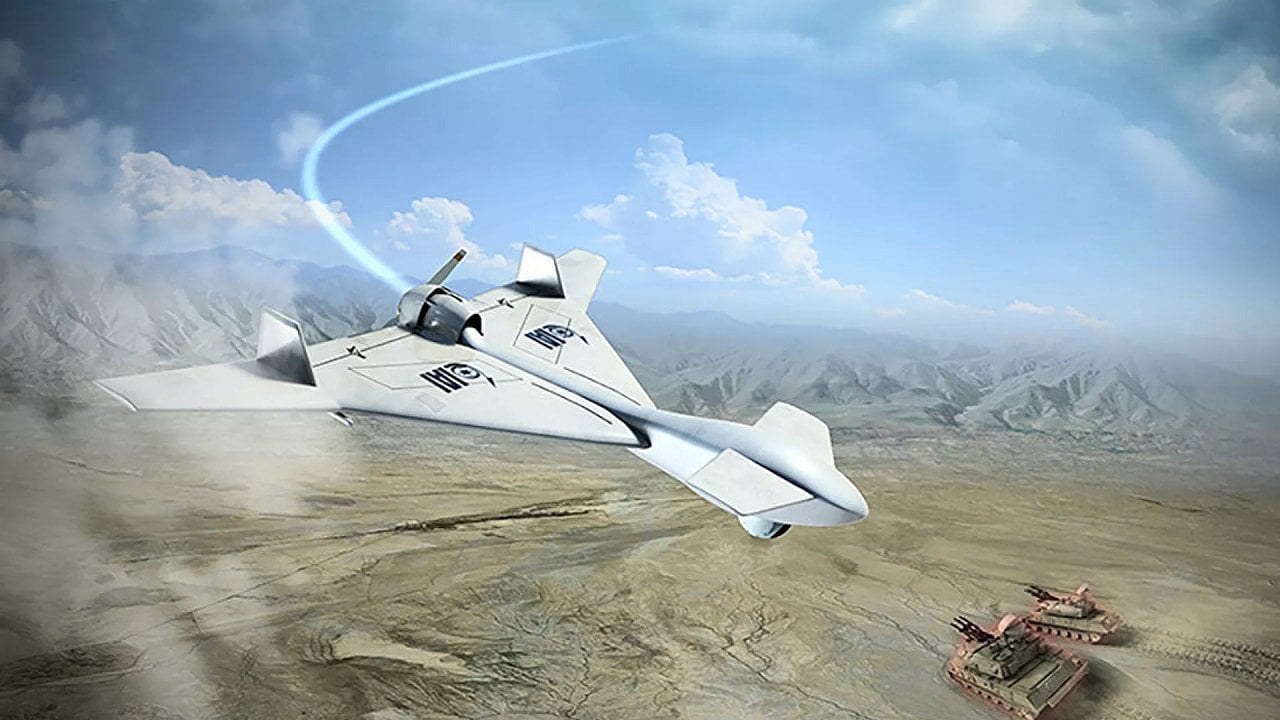The Kremlin’s invasion of Ukraine has highlighted the significant role armed unmanned aerial vehicles are playing in modern conventional conflicts. Very inexpensive to produce and easy to maintain, drones are proficient tools to collect reconnaissance and gather intelligence. More importantly, the use of drones in combat reduces risk for military personnel. A specific subtype of drones, loitering munitions, has taken center stage in recent conflicts. Often referred to as suicide or kamikaze drones, these are precision weapons that can loiter over a designated area while seeking a target to attack. Since the concept of suicide drones emerged many decades ago, Israeli Aerospace Industries (IAI) has been at the forefront of pioneering these weapons. In fact, IAI’s Harop loitering munition may be one of the most sophisticated killer drones of its kind.
Israel’s Drone History
Israel first used drones in combat following the outbreak of the 1973 Yom Kippur War. The U.S. provided the Israel Defense Forces with Firebee and Chukar drones, which had seen extensive service during the Vietnam War. Following the war, the Israeli government was determined to better protect its pilots against Syrian and Egyptian air defenses like mobile surface-to-air missile batteries. At this point, Israel helped pioneer the use of remote piloted vehicles, which would eventually be redesignated as unmanned aerial vehicles. A group of engineers at IAI, led by an Egyptian-born French immigrant named David Harari, spearheaded the country’s drone development efforts. By 1980, the team delivered four Scout drones to the Israeli Air Force.
Two years later, the Scout drone would play a pivotal role in a sweeping Israeli operation in the Bekaa Valley dubbed Operation Mole Cricket 19. During this mission, Scout drones – accompanied by Mastiff drones – flew over Lebanese airspace to bait Syrian air defenses into activating their radar systems. As detailed by The Drive, this decoy operation allowed Israeli fighter jets to launch anti-radiation missiles without being detected and fired upon. “Without radars, SAMs were useless and vulnerable to attack,” The Drive writes. “Additionally, Syrian fighter pilots, trained under the Soviet doctrine that centered around direction from ground-based radar intercept controllers, were essentially blind. Selective jamming by the IDF of Syrian Air Force radio frequencies made them even more vulnerable.”
Introducing the Harop
Over the next decade, Israel’s drone capabilities advanced further. The introduction of the IAI Harpy loitering munition emerged in the 1990s to “eliminate the hunter-killer kill chain concept,” as noted by the Drive. The concept behind the Harpy’s design was to create a loitering munition that could perform the roles of both provocateur and striker that the Scout and fighter jets had previously split.
The Harpy’s success led to the design of the Harop suicide drone, which is based largely on its predecessor. The lethal drone functions as an electro-optically guided attack weapon that can be reconfigured to perform multiple tasks, including attacking radars and gathering intelligence.
Equipped with a longer loitering time and range than the Harpy, the Harop is more valuable in operations where targets are farther away. The Harop can fly for up to nine hours at a maximum altitude of 15,000 feet. According to IAI, the Harop is designed to autonomously fly at predefined “holding areas” where the drone loiters prior to striking a target. The drone’s operator can control multiple Harops within the same holding area and has the ability to select one drone for target search and attack. Additionally, the operator can terminate an attack or attack once more, all using the same Harop.
The Harop was used in the 2020 NK conflict
Although drone warfare has become popularized by the Ukraine invasion, the use of lethal drones (specifically of loitering munitions) first peaked during the 2020 Nagorno-Karabakh conflict between Armenia and Azerbaijan. In part, the Azerbaijani military was able to overwhelm the Armenian forces by flexing its fleet of Harop drones, which provided a constant air threat to its soldiers. According to estimates provided in an Oryx report, Armenia likely lost 185 T-72 main battle tanks, 182 artillery pieces, 26 surface-to-air missile launchers, and more than a dozen radars to drone attacks.
While it looks like the Harop has not surfaced in the Ukraine-Russia conflict, the killer drone would certainly contribute to equipment casualties if launched. The Harop arguably remains the most cutting-edge suicide drone in operation today.
Maya Carlin is a Middle East Defense Editor with 19FortyFive. She is also an analyst with the Center for Security Policy and a former Anna Sobol Levy Fellow at IDC Herzliya in Israel. She has by-lines in many publications, including The National Interest, Jerusalem Post, and Times of Israel.

